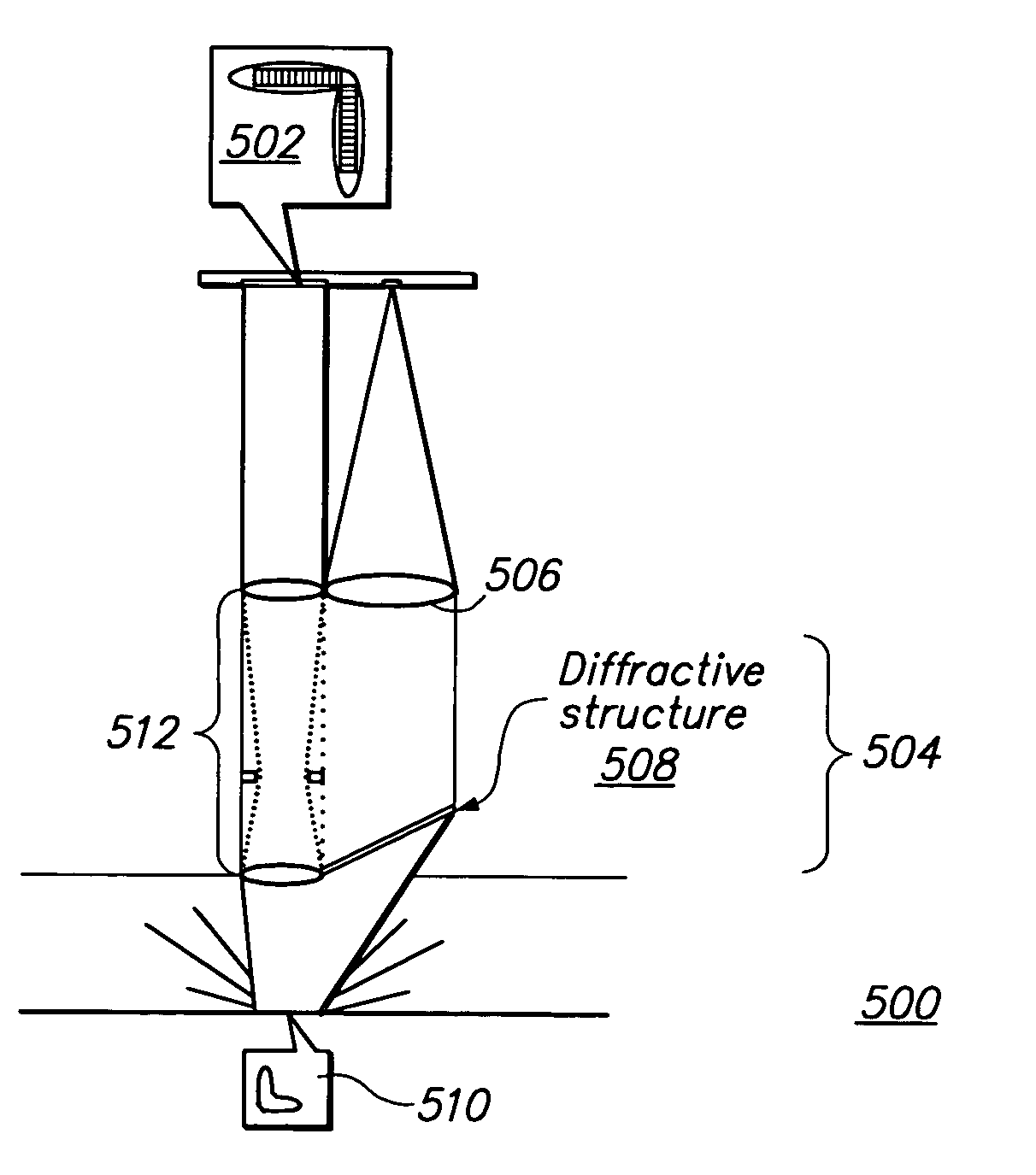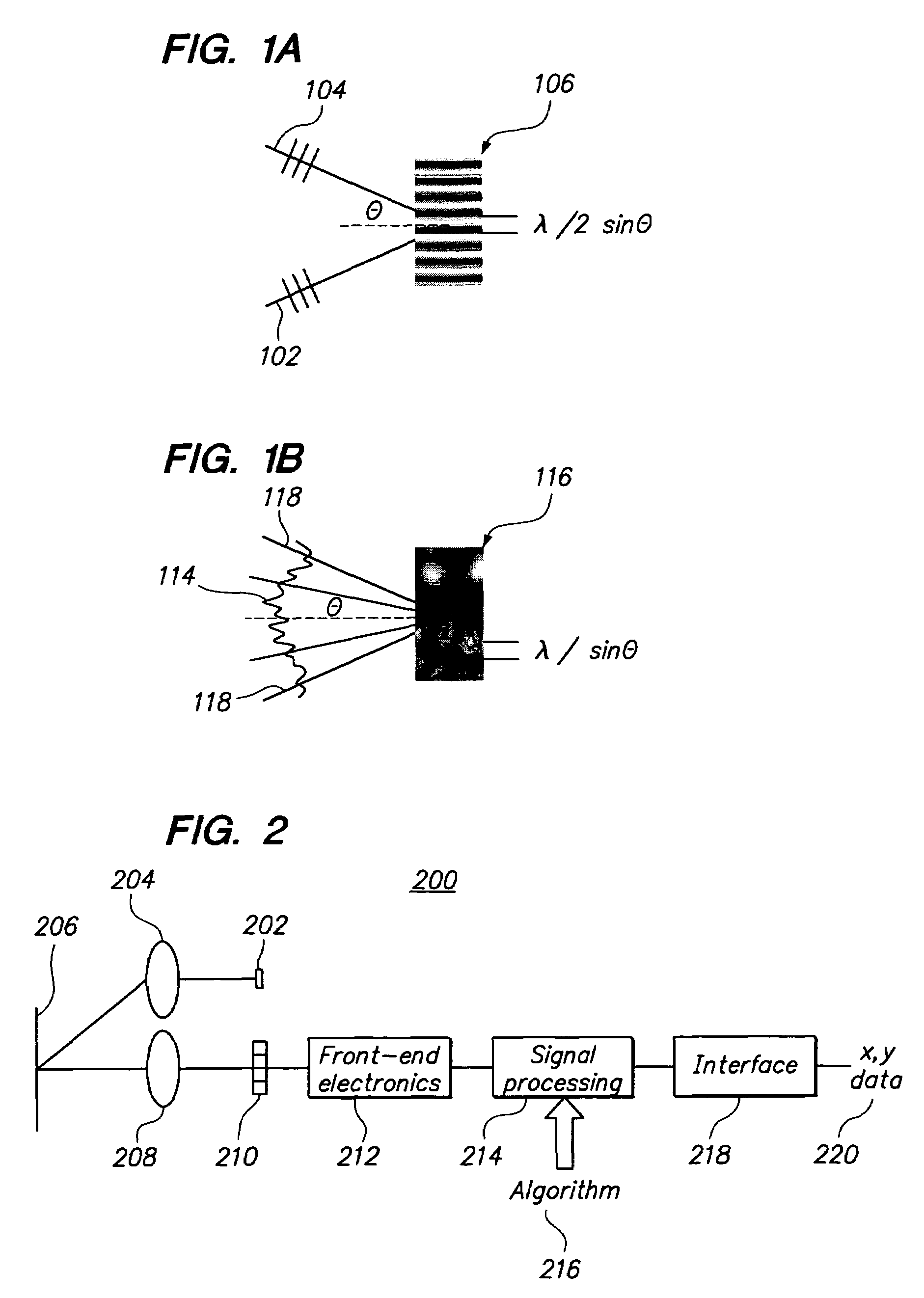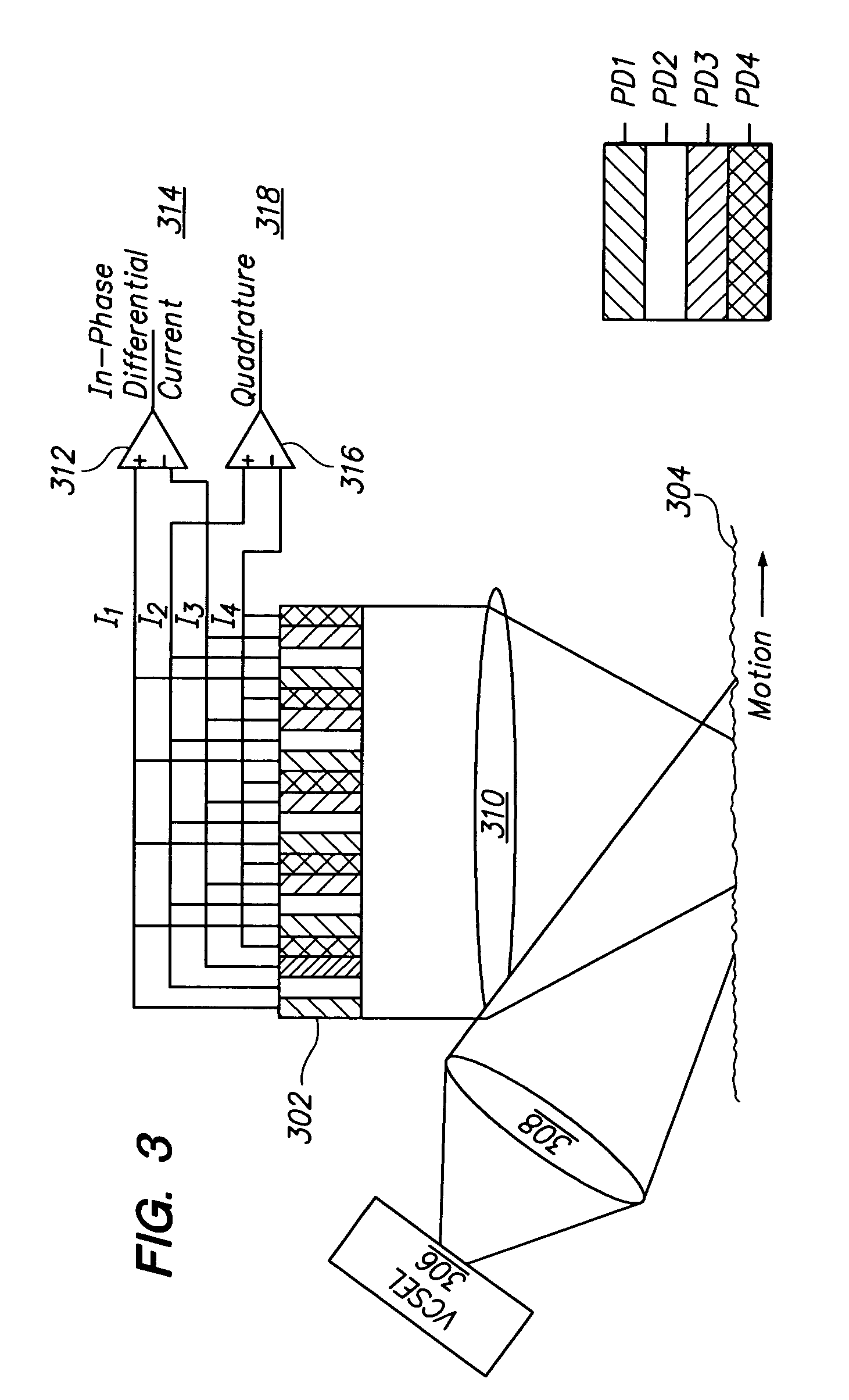Optical positioning device having shaped illumination
a positioning device and shaped technology, applied in the direction of radio frequency controlled devices, counting objects on conveyors, instruments, etc., can solve the problems of limiting the useful life of the device, prone to inaccuracy and malfunction, and low optical efficiency, and achieve a relatively high image processing requiremen
- Summary
- Abstract
- Description
- Claims
- Application Information
AI Technical Summary
Benefits of technology
Problems solved by technology
Method used
Image
Examples
Embodiment Construction
Problems with Illumination Misalignment and Inefficiency
[0024]One problem with prior speckle-based optical positioning devices is the potential for misalignment of the reflected illumination with the detector so as to cover the entire photodiode array of the detector. In order to reliably cover the entire detector array, prior OPDs have typically been configured to illuminate a much larger portion of the image plane than the field of view of the detector so as to ensure that the photodiode array is fully covered by the reflected illumination in spite of potential misalignment problems.
[0025]However, having a large illuminated area reduces the power intensity of the reflected illumination that the photodiodes detect. Thus, attempts to solve or avoid misalignment problems in prior OPDs have frequently resulted in a loss of reflected light available to the photodiode array, or have imposed higher requirements on the illumination power.
[0026]As discussed in detail below, one aspect of t...
PUM
 Login to View More
Login to View More Abstract
Description
Claims
Application Information
 Login to View More
Login to View More - R&D
- Intellectual Property
- Life Sciences
- Materials
- Tech Scout
- Unparalleled Data Quality
- Higher Quality Content
- 60% Fewer Hallucinations
Browse by: Latest US Patents, China's latest patents, Technical Efficacy Thesaurus, Application Domain, Technology Topic, Popular Technical Reports.
© 2025 PatSnap. All rights reserved.Legal|Privacy policy|Modern Slavery Act Transparency Statement|Sitemap|About US| Contact US: help@patsnap.com



